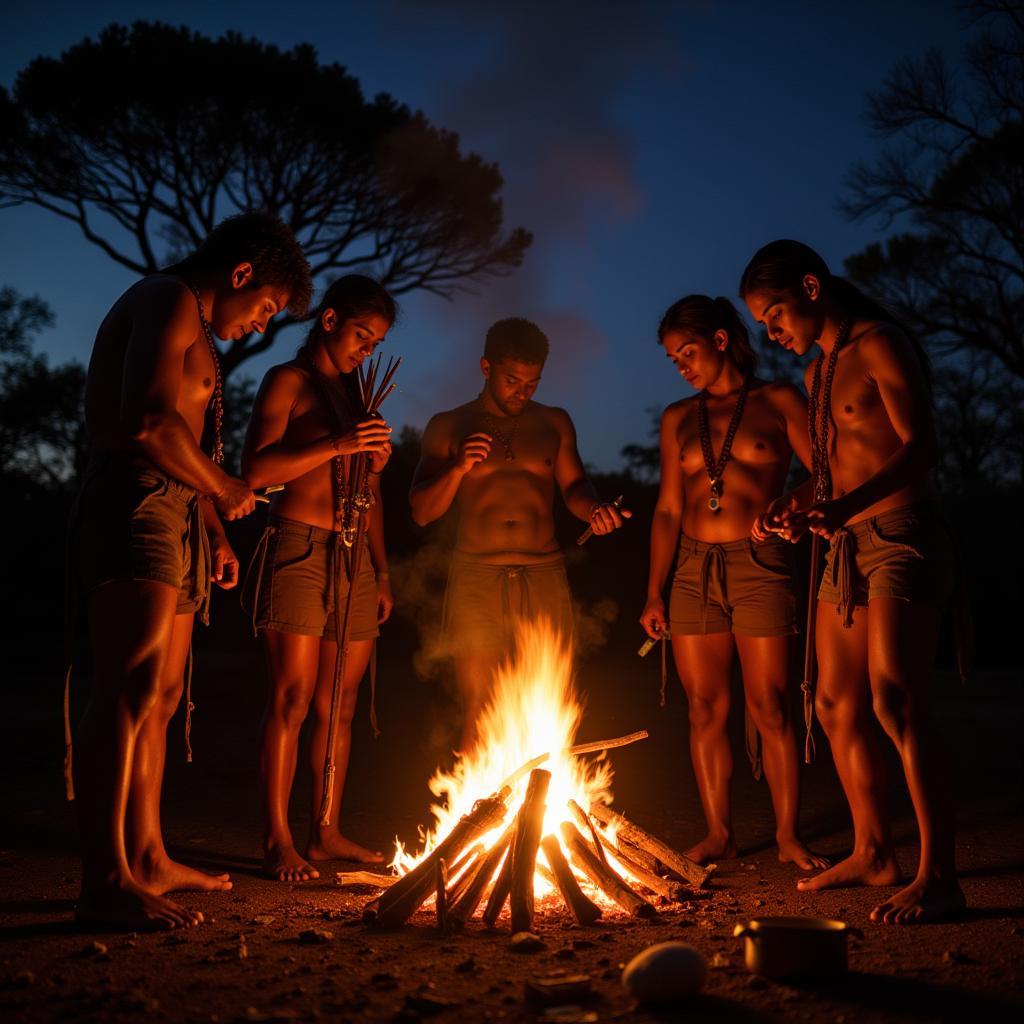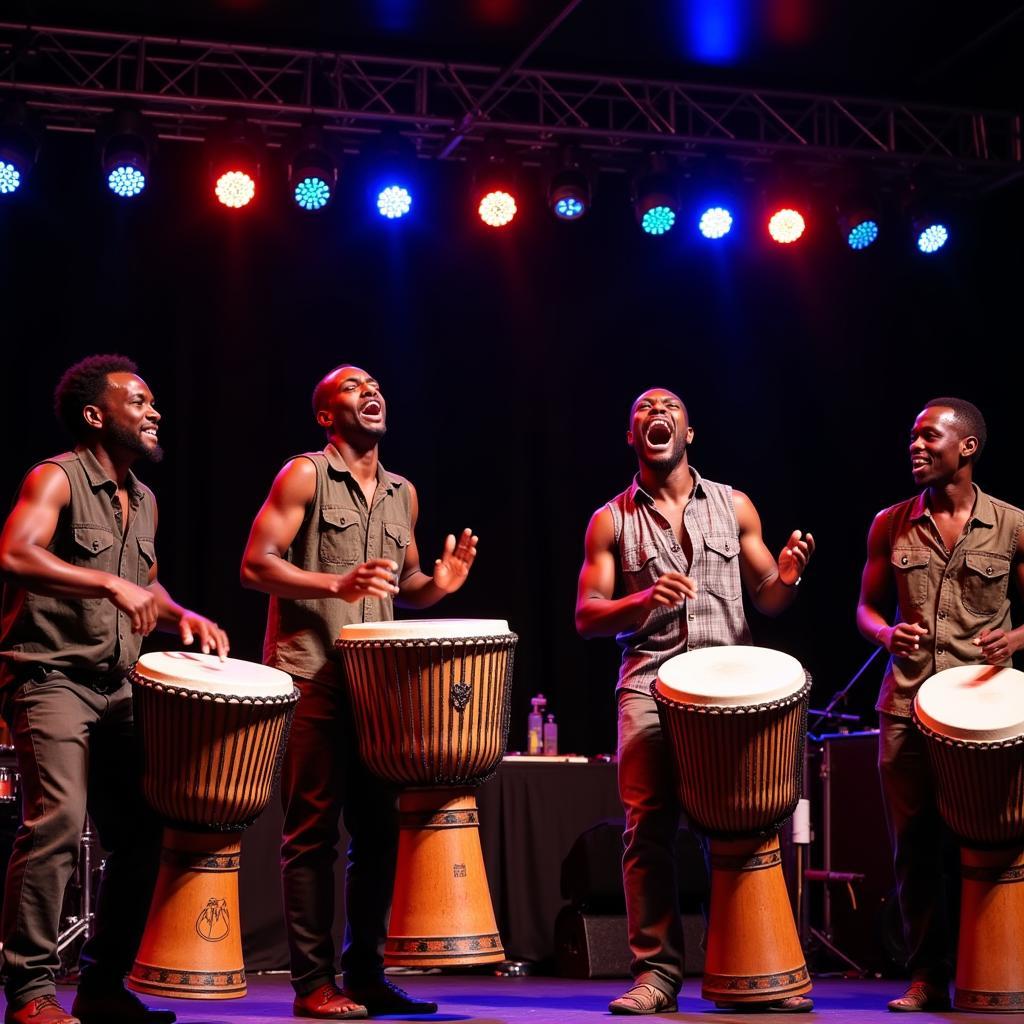The Relentless Pursuit: African Kalahari Desert Kudu Persistence Hunt
The African Kalahari Desert is a land of stark beauty and unforgiving conditions, where survival depends on adaptation and resilience. It is here that the ancient tradition of the kudu persistence hunt unfolds, a testament to human endurance and the intimate connection between hunter and prey. The kudu, a majestic antelope with spiraled horns and a powerful build, is no easy target. Their keen senses and ability to vanish into the arid landscape make them a worthy adversary, demanding respect and ingenuity from the hunters.
A Dance of Willpower: Hunters and Hunted in the Kalahari
The persistence hunt, also known as the pursuit hunt, is a hunting technique rooted in strategy and deep knowledge of the land and its creatures. Unlike ambush hunting, which relies on stealth and surprise, the persistence hunt embraces a direct, unwavering approach.  Kalahari hunters preparing for the hunt
Kalahari hunters preparing for the hunt
The San people, often referred to as Bushmen, are renowned practitioners of this ancient art. For millennia, they have roamed the Kalahari, their lives intricately interwoven with the rhythms of the desert. Their knowledge of animal behavior, tracking, and the environment’s nuances is unparalleled.
The Relentless Heat: A Shared Challenge
The Kalahari sun beats down mercilessly on both hunter and prey. Temperatures can soar well over 100 degrees Fahrenheit (38 degrees Celsius), pushing both to their physical limits. The hunters, often running barefoot or in sandals crafted from animal hide, must conserve their energy while maintaining a steady pace. ![]() Kalahari hunter tracking kudu in the desert
Kalahari hunter tracking kudu in the desert
The kudu, too, feels the heat’s oppressive force. Their ability to regulate body temperature is challenged, and prolonged exertion can lead to heat exhaustion. This is the crux of the persistence hunt. The hunters understand that while the kudu may be faster over short distances, they are not as well-equipped to handle sustained running in the scorching heat.
Endurance and Expertise: The Anatomy of a Persistence Hunt
The hunt begins with meticulous tracking. The hunters, often relying on little more than a simple loincloth and carrying water in ostrich eggshells, read the subtle signs left behind by the kudu – a displaced pebble, a broken twig, the faintest imprint in the sand.
Once the kudu’s trail is established, the chase is on. The hunters, moving at a steady trot or jog, follow the tracks relentlessly. Hours may pass, even days, as they pursue their quarry across the unforgiving terrain. The hunters rely on their incredible endurance and the ability to read the landscape, predicting the kudu’s movements and anticipating its attempts to shake off the pursuit.
“The desert whispers its secrets to those who listen,” remarks Dr. Naledi Moshoeshoe, a leading anthropologist specializing in San culture. “The San hunters don’t just chase the kudu; they engage in a dialogue with the land, interpreting its subtle cues to anticipate the animal’s every move.”
Outlasting the Quarry: The Final Act
As the hunt progresses, the kudu’s fatigue grows. It seeks refuge in the shade, panting heavily, desperately trying to regulate its body temperature. The hunters, recognizing these signs, increase their pace, knowing the end is near.  Kalahari hunters approaching an exhausted kudu
Kalahari hunters approaching an exhausted kudu
Finally, often at the hottest part of the day, the kudu collapses from exhaustion. The hunters, with a mix of respect and gratitude for the animal’s sacrifice, deliver a swift, humane kill. The kudu, a symbol of strength and resilience, provides sustenance for the community, its sacrifice ensuring their survival.
The persistence hunt is not merely a method of obtaining food; it is a ritual, a dance of respect between humankind and the natural world. It showcases the power of human perseverance, knowledge, and the delicate balance that governs life in one of Earth’s most challenging environments.

